Many of us would call our journey through avocations such as hunting or fishing a quest for purity. In my case, it’s a search for something more certain and more true than what is offered out of drive-thru windows under neon lit canopies along suburban highways. We pursue clean lines, clear water, and something close to silence. We gravitate towards people who, at the very least, are conflicted about the existence of things like Life Hacks and Influencers. We are compelled by places that offer our souls clear exposure to the untamed wonders of Creation; places that offer a quiet that makes our hearts pound loudly enough for others to hear, even if some of us only get to experience them for a few days a year. Truth be told, many of us go so far as to wonder how others survive without such escapes.
The other places so many of us spend time, those titanic and distinctly human places which are frequently upstream from those that offer the purity and solitude we seek—think cities like New York, Chicago, Houston and Phoenix—are places where Code Red air quality days and sewer overflows routinely occur. Big cities have big problems, as they say. Problems like crime, trash, and wastewater.
But, if you’ve been following the news over the past few years—especially news that relates to climate and weather—you have probably come to realize that all of these problems, including wastewater problems, are happening everywhere: in big cities, throughout America’s seemingly endless suburban sprawl, and even in small towns. They’re likely occurring right where you live and even in those lovely little towns and far away places you travel to fish.
During my first visit to Barbados in 2002, I was horrified at the sight of the nearshore reefs—all dead—the result of sewage pollution and harmful algal blooms. My first trip to Costa Rica in 2003 revealed the same—an entire ecosystem completely devoid of life save for a few species of eels—thanks to sewage that had been straight-piped to the reef. My first several trips to the Florida Keys in the 1990s revealed turtlegrass flats overwhelmed with epiphytic algae, a sign of sewage pollution and resulting stress on the turtlegrass, which eventually died in many places.
The reefs of Barbados and Costa Rica and the flats of Florida Bay are not the concrete-lined channels of the Los Angeles River, nor are they the asphalt-laden streets of Atlanta or Kansas City. Yet, in each of these cases, it was human waste that stressed these habitats and human waste that killed them off. It’s past time that we recognize that human wastewater is a suburban, small town and rural community problem, just as it is a problem affecting our largest urban centers.

The fixed-in-place infrastructure for human wastewater may have been adequate at some point in history, but almost universally in the 21st century, this infrastructure is inadequate for allowing the “receiving” soils and waterways the breathing room to combat human waste and a changing climate at the same time. The waters that so many of us love and depend on for our sanity—if not our spirituality —are being ruined by rural septic tanks and urban sewer overflows, and at a failure rate higher than in the past due to sea-level rise and erratic rains and floods in our new climate.
A metric called the “environmental risk profile” of many water-focused communities from the Rocky Mountains to the Florida Keys is changing right now, and most water-dependent communities look to be at a higher risk of critical infrastructure failures over the coming decades as a result of changes in the likelihood of fires, floods, and other weather events. (More information about environmental risk profiles in general can be found on Rockefeller University’s website as well as the EPA’s Exposure and Risk Screening Tool.)
A blown-out road near your fish camp in Alberta means a big inconvenience. But a blown-out sewer line (or failure of a large private septic system) may mean that the fishery you seek is gone. It may return or be restored in future years, or it may not. Again, we know that many of the special places we love are already under incredible stress from climate change, warming waters, and land-use changes. The impact of wastewater spills can be acute and locally catastrophic to these already struggling fisheries.
It’s 2019 and many of us are in “conservation overload,” or so it seems. As we continue to better understand the global nature of many environmental threats, our ability to make a meaningful difference sometimes seems, well, in the shitter. But allow me to challenge you on the issue of human waste in the places you live and travel. Inadequate wastewater infrastructure, while a ubiquitous problem, is one that can be quickly addressed with local-based solutions that will last a generation or more.
More importantly, it’s a critical and immediate issue that demands both rural and urban investment. That’s because of the near guarantee of infrastructure failure and the completely known and understood impacts to water quality, human health, and fish. This is an area where we as anglers can have a huge impact, and honestly, have a moral obligation to act, since our extensive travels leave a footprint – including sewage – behind us.
In the next few years, chances are high that you’ll be asked to vote on wastewater, septic-to-sewer, or water re-use appropriations at the local or state level, or to support (or oppose) politicians discussing those kinds of investments. Read up on the details and press your elected officials to make these common sense, non-partisan investments. If we succeed, we might just get to keep most of that gin clear water we so enjoy. Maybe we’ll even get to pass it on to the next generation of hunters and anglers.






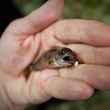
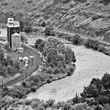



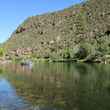





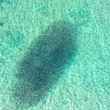








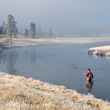
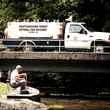





Comments